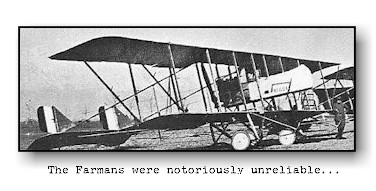|
|||||||
| 0605 CAPTAIN TOM WHITE Our story this month concerns the exploits of one of Australia’s largely, (and unfortunately) forgotten heroes of WW1, Captain T.W. (Tom) White of the Australian Flying Corps. The story is set in Mesopotamia (modern day Iraq) nearly ninety years ago, when Australians were fighting (as part of the British Empire) another war of “liberation.” A certain proportion of the native population was resisting. Does it all sound familiar? The excerpt below comes from Official History of Australia in the War of 1914-1918 Volume VIII: Australian Flying Corps in the Western and Eastern Theatres of War 1914-1918 by F.M. Cutlack, as first published in 1923. The British forces in Iraq were preparing to attack Kut and the Australian pilots were undertaking all sorts of hazardous reconnaissance missions which they were lucky to survive. “Such narrow escapes, even in rear of the British lines, were regarded by these airmen as part of the day’s work. Owing to the small number of troops engaged in active operations, few could be spared to guard at all points the long river-line of communication. Each town, therefore, from the base to the most advanced position, became an entrenched camp; the territory outside was No-Man’s Land, and over it roamed tribes whose custom it has always been to hover, like birds waiting for their prey, on the flanks of invading armies.
While White
was flying low above the camp in search of a
place to land, the Arabs opened fire on his
machine, and their bullets broke an aileron rib
and pierced the propeller. White landed on a
road about a thousand yards from the river
bank. After making a show of force
by gesticulating and pretending to point out to
a comrade the Arabs who had been shooting, he
ran on foot to the river, carrying a spare rifle
for the general. He and the general returned to
the aeroplane, which the Arabs had meanwhile
hesitated to attack, and flew home to Aziziyeh.
Gordon was brought in by an Indian cavalry patrol, which had seen the aeroplane descend and had gone over to its help.” As a matter of interest: on the 19th November, 1915, Squadron Commander Richard Bell Davies of 3 Squadron Royal Naval Air Service rescued a fellow squadron pilot shot down on a bombing raid on Ferrijik Junction, Bulgaria. Another daring extrication from under the noses of the enemy, which in this case won Bell a VC, and good luck to him. However, no such award for Tom White, even though he rescued a general. |
|||||||
|
 The
outstanding example of the danger from these
Arabs is the previously related disaster to Merz
and Burn. The story of their loss might easily
have been repeated in [early] November, when an
accident happened to a seaplane piloted by
Gordon, who carried as passenger Major-General
G. V. Kemball, Chief of General Staff in
Mesopotamia. The seaplane was forced to land
through engine failure between Kut and Aziziyeh.
Its non-arrival at Aziziyeh caused alarm, and
White went in search of it in M.F.2. He found
the seaplane aground beside a high bank of the
river, close to which was a large Arab camp.
The
outstanding example of the danger from these
Arabs is the previously related disaster to Merz
and Burn. The story of their loss might easily
have been repeated in [early] November, when an
accident happened to a seaplane piloted by
Gordon, who carried as passenger Major-General
G. V. Kemball, Chief of General Staff in
Mesopotamia. The seaplane was forced to land
through engine failure between Kut and Aziziyeh.
Its non-arrival at Aziziyeh caused alarm, and
White went in search of it in M.F.2. He found
the seaplane aground beside a high bank of the
river, close to which was a large Arab camp.

